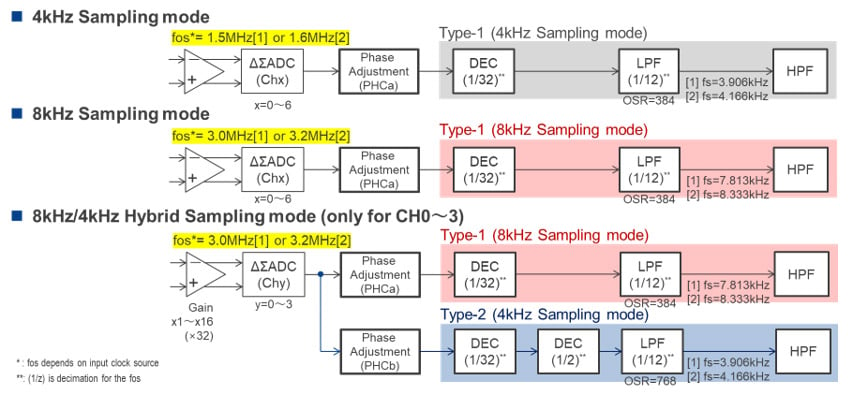As we move toward energy-saving societies to reinforce the sustainability of our global environment, the digitalization of conventional systems, as well as lower power operation at the endpoint are fundamental requirements to realize. When endpoint systems are digitalized, it is possible to analyze an individual system status seamlessly for further energy-efficient, streamlined system operation while the systems themselves operate at lower power.
In this blog, I will use the Renesas RA2A2 microcontroller as an example to present solutions to address an energy-saving society, highlighting its rich peripheral features and excellent low-power performance.
Key RA2A2 Features
The RA2A2 group of MCUs includes rich peripheral functions that contribute to the digitalization of the endpoint systems with the capacities of the 32-bit performance of Arm® Cortex®-M23, high-level analog sensing, and ultra-low power operation. Three unique peripheral functions are suitable for digitizing endpoint systems and can be used in energy management applications, as well as industrial applications:
- Continuous firmware update
- New mode to reduce segment LCD panel current usage
- High-resolution ADC with low power
Continuous Firmware Update
The RA2A2 supports dual-bank flash with a memory mirror function, thus, the user can implement firmware updates easily. The concept of the continuous firmware update without interrupting operation is shown in Figure 1.
In this case, Bank0 is a fixed program including firmware, flash update program, and boot program, while the user has set applications A and B on Bank 1. By utilizing the flash update program, the user can swap the application to run on the mirror address by setting which application to look at.
With this continuous firmware update, endpoint systems can operate without ceasing operation, therefore, seamless, lean, high-efficiency operation is possible.

New Mode to Reduce Segment LCD Panel Current
The RA2A2 supports a new LCD mode to contribute to lower power operation by reducing panel current. Figure 2 is an overview of the LCD panel driving method.

VL2 reference mode improves voltage boosting efficiency for LCD panel drive, compared with the existing VL1 reference mode. In the case of VL1 reference mode, it needs to drop MCU VCC to 1.0V once, then needs to boost up to 3.0V. However, VL2 reference mode is able to save MCU current because VL2 mode generates 2.0V as the reference voltage. By improving reference voltage from 1.0V to 2.0V, the panel operating current can be cut to half compared with VL1 reference mode and it contributes to power current reduction at the system level.
VL4 reference mode generates 3V at the internal voltage generation circuit, and then VL2 and VL1 are generated by stepping down from 3.0V. Therefore, VL4 can reduce MCU current for LDC panel drive. When we compare with VL1 mode, the panel operating current can be reduced by one-third.
Because panel drive current has huge impacts on battery life for applications such as portable LCDs with battery power, VL2 mode or VL4 mode contributes to longer battery life.
High-Resolution ADC with Low Power
The 24-bit sigma-delta (ΣΔ) ADC realizes low-power and high-resolution AD conversion for power-sensitive applications. It supports up to 7 channels and simultaneous sampling architecture. With simultaneous sampling architecture, it is able to acquire highly accurate on time axis, as well as precise sampling data of each channel.
This ΣΔ ADC supports various sampling modes to realize high-level sensing data acquisition, especially the unique 8kHz/4kHz hybrid sampling mode to acquire different frequency signals at the same time.
A use case example is next-generation smart electricity meters with Non-Instructive Load Monitoring (NILM) technology that requires continuous monitoring of current and voltage, as well as harmonic signal acquisition to monitor the energy consumption of individual users. RA2A2 meets the specification requirement to support this use case. Figure 3 shows the sampling mode of RA2A2’s 24-bit sigma-delta ADC.

Summary
With the unique features highlighted here, the RA2A2 MCU contributes to the digitalization of endpoint systems that lead to energy-saving societies, its performance includes a 32-bit Arm Cortex-M23, 24-bit sigma-delta ADC, segment LCD controller, and low power operation capability. Please take advantage of these features for your system development.
For information on more RA2A2 benefits, please visit renesas.com/ra2a2.
